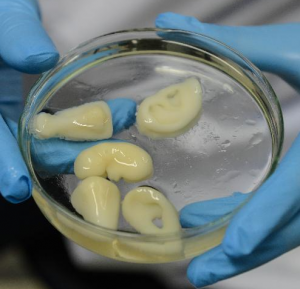Do Shorter Men Or Taller Men Make Better Husbands?
 (Picture to the right is taken from here.)
(Picture to the right is taken from here.)
This subject seems to have developed recently due to the fact that two article recently came out which referenced a study and they gave almost exactly the opposite, contradicting information and viewpoint.
The people at the reddit/r/short sub threads were upset that there didn’t seem to be a really clear answer. They referenced this problem Here. Well, it turns out the article “Short Men Make Better Boyfriends and Husbands” was WRONG. The writer of that article interpreted the discussion section incorrectly. The two articles which have gone viral seem to contradict their points, and one of them is indeed wrong.
Refer to the study available here. Note that it is not a hundred page Masters or Ph.D Thesis but just a 20 page working paper which is not fully finished.
Here is what the paper actually says, after I took a look at the discussion section. I will outline each point that the authors were trying to make, very clearly.
Point #1 – The qualities of short, average, and tall men’s spouses are not the same.
Point #2 – The taller men are more likely to mate with a women who finished high school than the shorter men. (Personally, this doesn’t say a lot). The author then takes this data and give her own interpretation of it, which she thinks means that the “better educated” females are willing to mate with the taller guys by sort of doing a type of value exchange. (Personally, I don’t think being able to graduate from high school should be considered “better educated”)
Point #3 – The the tallest men appear to be more likely to couple with older women, while shorter men most of the time couple with younger women. – (The author interprets this to suggest that a taller guy would look older relative to the shorter guy, so that older women thinks he is more to their age)
Point #4 – Since it was found that shorter men seem to couple with younger women more often than not, it causes and/or contributes to the fact that those relationships where there is a shorter guy, the relationship is more traditional, where the guy is the breadwinner.
As the author explains… ” This further underscores how height, and more generally men’s
attractiveness, affects other types of status exchange and indirectly contributes to the exchange of resources within a union”
My Interpretation: It seems to mean that when the guy is lacking in height (which is a attribute most humans value) , he needs to use a another way to signify that he has value and he can give some type of value towards the relationship/union/coupling.
Point #5 – Shorter men are more likely to end up in relationships where they are shorter or at the same height as their partner (Duh!!! No shit sherlock). The relationships are rare, being only about 9% of the relationships.
Point #6 – By choosing a more traditional type of relationship where the man makes much more money than the women and does less housework, “…it allows short men to enact traditional gender ideals, thereby performing their masculinity in the absence of expected anthropomorphic differences”
Point #7 – Shorter men tend to be in more stable relationships than average and tall men.
Point #8 – Shorter men marry at lower rates and get married later in life (aka get into the relationship later than their taller counterparts)
Point #9 – The reason why shorter men get married later is because “...is reflective of a selection process in which some women opt out of a marriage with short men before it begins” – (Aka they get rejected by women much more in the get go. It takes the shorter men much longer for them to find a women who accepts them as a suitable marriage partner.)
Conclusions
So is the taller or shorter men better husbands?
The shorter men do get married later in life, but the long term relationships (aka marriages) that they do get into are much more stable. That is because they seem to specifically look to get into relationships where they are the one who earns the main amount of money in the household, thus a sort of traditional type of relationship. However, that also means that taller men do more housework than shorter men. It might suggest that taller men don’t mind switching the roles, and take a more non-traditional role.
It just comes down to the word “better”. If a better husband is one who does more housework, then it would be the taller one. If being a better husband means taking a bigger role in making the money for the household, then it would be the shorter ones. What I am certain is that the shorter men probably more often than not put much more commitment, energy and effort into a relationship than the taller counterparts. Even if they are NOT as likely be willing to help out around the house as their taller counterparts, they are putting their energy into making money for the house.
The fact is that as long as you make enough money, you can afford to hire a maid & nanny to do all that house work for you. You just have to focus on making money for cash flow.
So it is just a sort of insecurity issue, where taller men don’t feel particularly insecure about their position in the relationship or being thought of as being too feminine for being willing to do more housework and take care of the kids?
I don’t know. However, That would definitely explain why in the Northern European aka Scandanavian countries like Sweden, Denmark, and Norway , which are very egalitarian, the men are now becoming more like stay-at-home-dads. That phenomena has been well documented and even shown on an episode of the TV Show Welcome to Sweden, which was talked about on the reddit/r/tall sub threads, which is quite interesting.
So here is everything wrapped up…
Main Thesis: Relatively speaking, when comparing the overall percentages of couplings/relationships, the taller men actually do more housework at home than the shorter men, because shorter men tend to choose women who are younger than them (than the taller men) and look to get into the more traditional/non-egalitarian type of relationship, as a way to compensate for their lack of anthropometric value, which sort of suggests that the short guy’s way of expressing his masculinity is by being the breadwinner and giving financial value.
That is what the study actually says. It is NOT my personal thoughts, but the exact meaning of what the author says.
Epilogue
I don’t know for sure whether it is absolutely true that shorter men at some unconscious level is trying to compensate for their lack of value from body size by looking for women who are younger and want to get into that traditional relationship to maybe prove their masculinity by making more money relatively than the women.
The truth is that we could flip the entire thesis around and still be able to come with a half-assed reasonable explanation (aka justification and rationalization) why taller men get into more stable relationships and shorter men do more household work.
That PDF that someone else linked to is for the Sociology Department at NYU. Sociology maybe be categorized as a type of social science, but it is not true “hard” science, where everything is measured and there is a true logic to everything.
The social sciences (which I call the “soft” sciences) are looking at human behavior and how cultures behave, and as we all know, the study of human behavior is not an exact science. Humans are not completely logical computer programs or robots. We are irrational, and no economist or economical theory will ever be able to explain the dozens, maybe even hundreds of psychological factors, desires, needs, beliefs, and values that we have. Traditionally the entire study of economics was based on one fundamental principal, which is that humans will always act accordingly and rationally based on their individual selfish needs and desires. That was proven wrong, since sometimes we do things that go against that principle. We are irrational, and our actions can not be predicted 100% of the time, although some theories developed can predict what the majority of the people will do for the majority of the time.
We are a truly very complex species, with often contradictory emotions and thoughts going on in our heads. We will say one thing and do another thing. We can be the most kind of people but also turn into savages with a simple nudge.
(Side Thoughts: It is said that India is supposed to be the land of contradictions, but people also say that about China too. Then there are people who say that Japan is a land of contradictions. Others say that about Dubai of the UAE. So which country is not a country of contradictions? – When economists describe these two billion plus countries, both of the countries are described the same way, by saying that the nation is one of contradictions. They want to push towards the future and make progress and growth, but you also want to preserve the old traditions and values. If one writer says that “India is a land of contradictions” and another writer says that “China is a land of contradictions” and another writer says that “Japan is a nation of contradictions“, and another says that “Dubai is a city of contradictions” then you realize that there is not going to be some simple and easy rule to label any group of people, especially the countries with over a billion people. We are all living in the gray area, where we can’t be defined through the prism of black and white, 1s and 0s.)
There is too much room for interpretation and re-interpretation, even when there is hard numbers and data analysis using trend lines and monte carlo statistical simulations. When we try to make our interpretation of data gathers from polls, surveys, anecdotal stories, individual personal experiences, unique references, etc. aka the entire gammit of human behavior, we often are not completely objective and throw our own biases into it.
For almost the exact same conclusion I just reached, refer to the Huffington Post article “New Study Reveals Interesting Link Between Men’s Height And Divorce“




